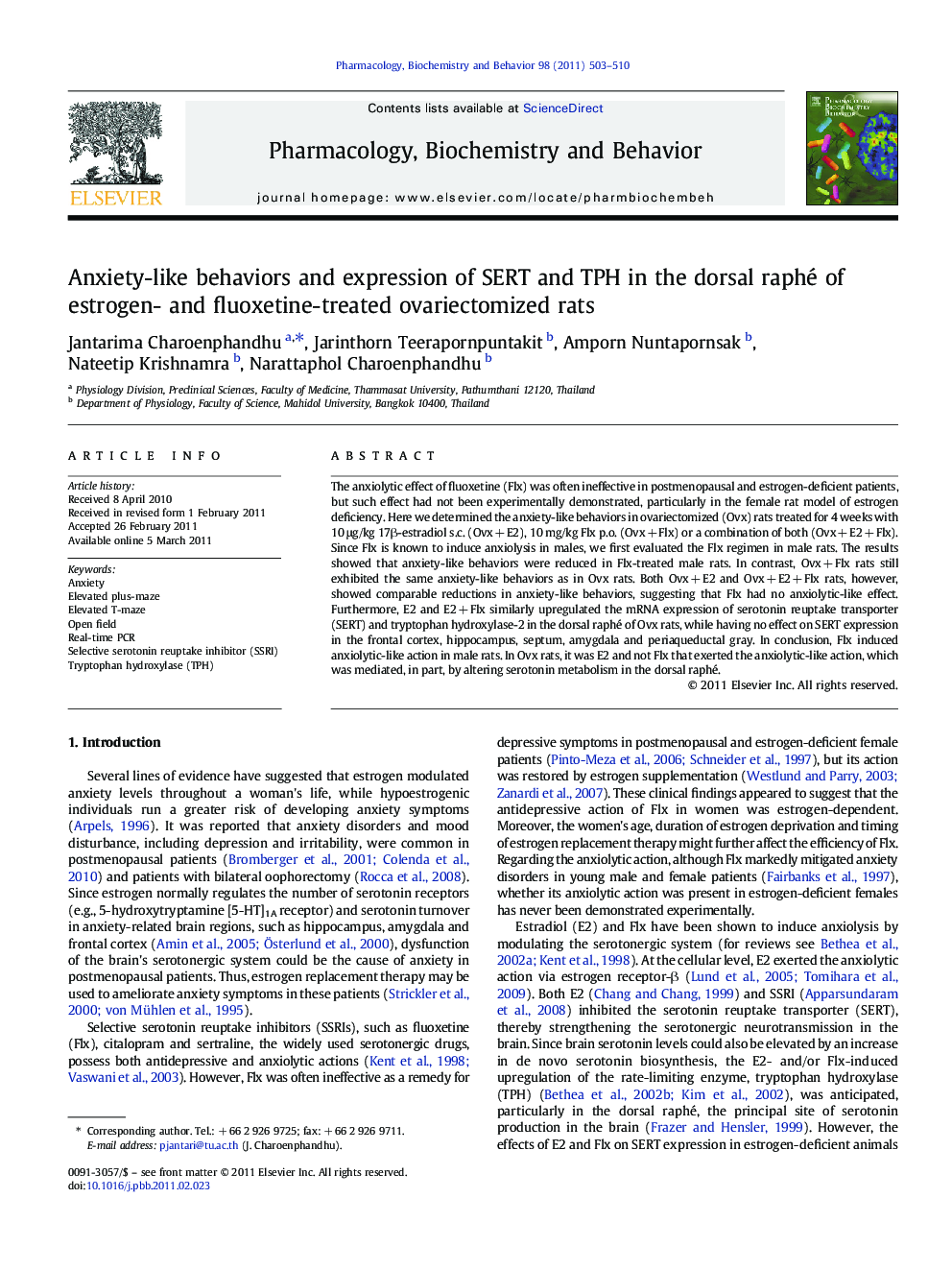| Article ID | Journal | Published Year | Pages | File Type |
|---|---|---|---|---|
| 2013347 | Pharmacology Biochemistry and Behavior | 2011 | 8 Pages |
The anxiolytic effect of fluoxetine (Flx) was often ineffective in postmenopausal and estrogen-deficient patients, but such effect had not been experimentally demonstrated, particularly in the female rat model of estrogen deficiency. Here we determined the anxiety-like behaviors in ovariectomized (Ovx) rats treated for 4 weeks with 10 μg/kg 17β-estradiol s.c. (Ovx + E2), 10 mg/kg Flx p.o. (Ovx + Flx) or a combination of both (Ovx + E2 + Flx). Since Flx is known to induce anxiolysis in males, we first evaluated the Flx regimen in male rats. The results showed that anxiety-like behaviors were reduced in Flx-treated male rats. In contrast, Ovx + Flx rats still exhibited the same anxiety-like behaviors as in Ovx rats. Both Ovx + E2 and Ovx + E2 + Flx rats, however, showed comparable reductions in anxiety-like behaviors, suggesting that Flx had no anxiolytic-like effect. Furthermore, E2 and E2 + Flx similarly upregulated the mRNA expression of serotonin reuptake transporter (SERT) and tryptophan hydroxylase-2 in the dorsal raphé of Ovx rats, while having no effect on SERT expression in the frontal cortex, hippocampus, septum, amygdala and periaqueductal gray. In conclusion, Flx induced anxiolytic-like action in male rats. In Ovx rats, it was E2 and not Flx that exerted the anxiolytic-like action, which was mediated, in part, by altering serotonin metabolism in the dorsal raphé.
Research highlights►Fluoxetine induced an anxiolytic action in male rats. ►Estradiol but not fluoxetine induced an anxiolytic action in Ovx rats. ►Estradiol upregulated SERT and TPH2 mRNA expression in the dorsal raphé of Ovx rats.
